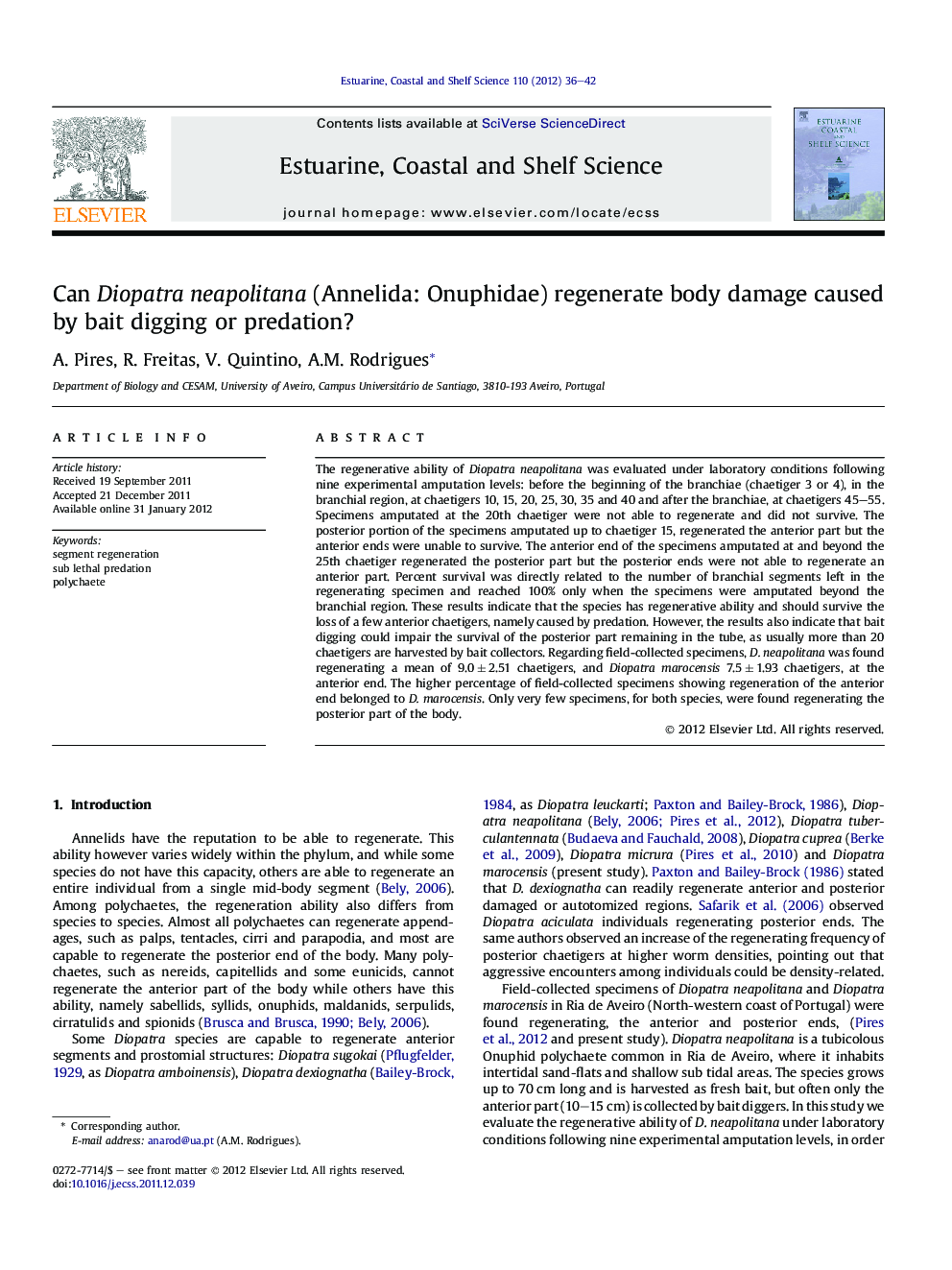| کد مقاله | کد نشریه | سال انتشار | مقاله انگلیسی | نسخه تمام متن |
|---|---|---|---|---|
| 4540110 | 1626685 | 2012 | 7 صفحه PDF | دانلود رایگان |

The regenerative ability of Diopatra neapolitana was evaluated under laboratory conditions following nine experimental amputation levels: before the beginning of the branchiae (chaetiger 3 or 4), in the branchial region, at chaetigers 10, 15, 20, 25, 30, 35 and 40 and after the branchiae, at chaetigers 45–55. Specimens amputated at the 20th chaetiger were not able to regenerate and did not survive. The posterior portion of the specimens amputated up to chaetiger 15, regenerated the anterior part but the anterior ends were unable to survive. The anterior end of the specimens amputated at and beyond the 25th chaetiger regenerated the posterior part but the posterior ends were not able to regenerate an anterior part. Percent survival was directly related to the number of branchial segments left in the regenerating specimen and reached 100% only when the specimens were amputated beyond the branchial region. These results indicate that the species has regenerative ability and should survive the loss of a few anterior chaetigers, namely caused by predation. However, the results also indicate that bait digging could impair the survival of the posterior part remaining in the tube, as usually more than 20 chaetigers are harvested by bait collectors. Regarding field-collected specimens, D. neapolitana was found regenerating a mean of 9.0 ± 2.51 chaetigers, and Diopatra marocensis 7.5 ± 1.93 chaetigers, at the anterior end. The higher percentage of field-collected specimens showing regeneration of the anterior end belonged to D. marocensis. Only very few specimens, for both species, were found regenerating the posterior part of the body.
Figure optionsDownload high-quality image (149 K)Download as PowerPoint slideHighlights
► The regeneration of Diopatra neapolitana was studied from nine amputation levels.
► Specimens amputated up to chaetiger 15 only regenerated the anterior part.
► Specimens amputated at chaetiger 20 were not able to regenerate and did not survive.
► Specimens amputated at and beyond chaetiger 25 only regenerated the posterior part.
► Bait digging harvests more than 20 chaetigers and could impair survival.
Journal: Estuarine, Coastal and Shelf Science - Volume 110, 10 September 2012, Pages 36–42